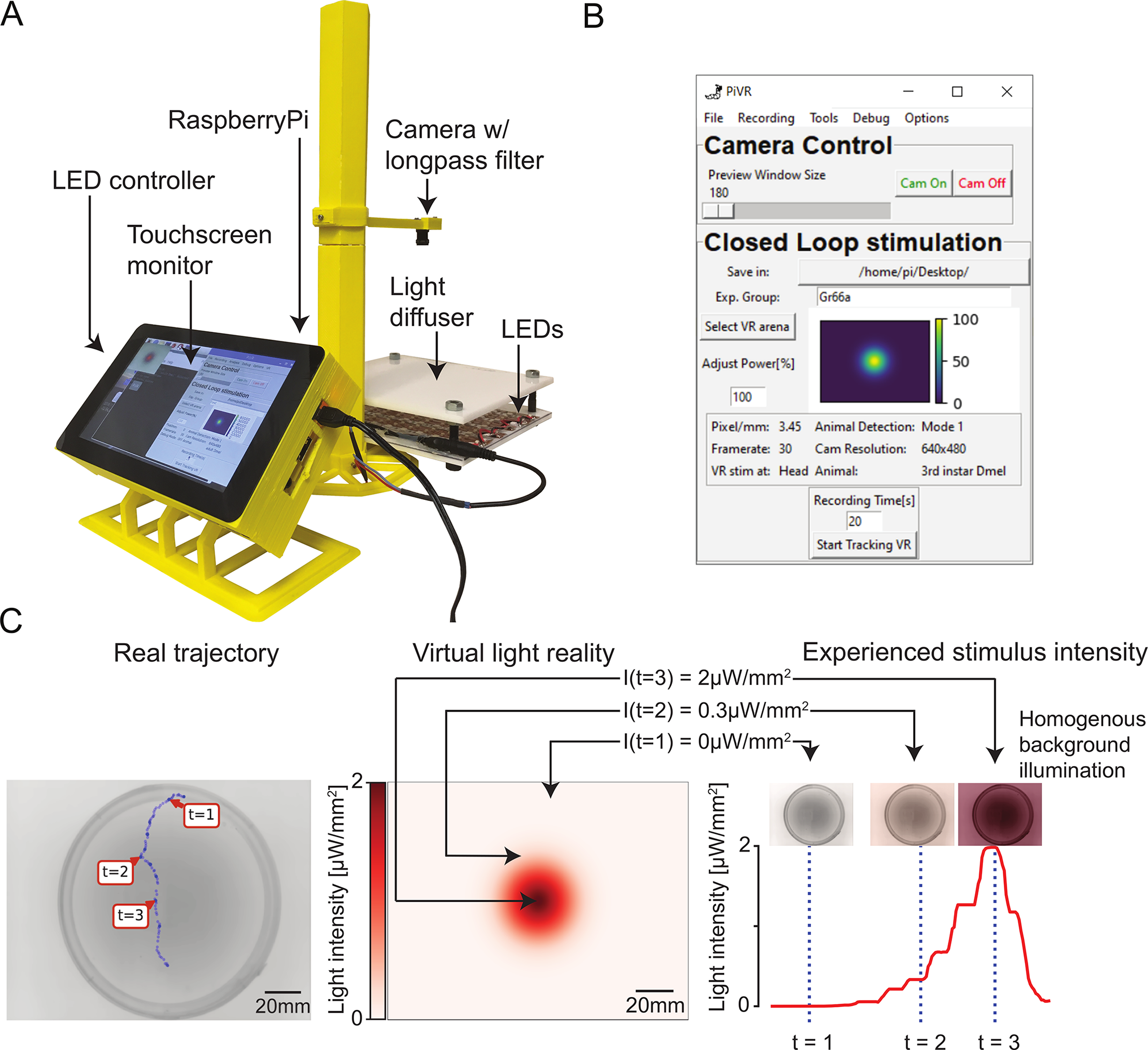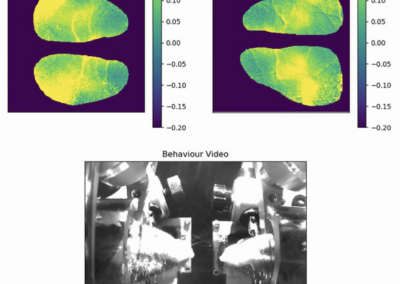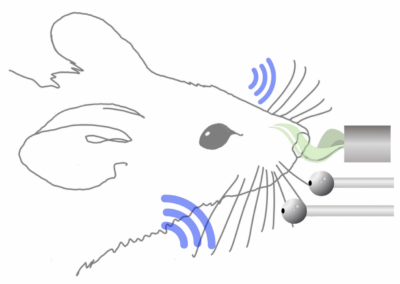The Raspberry PiVR, or the Pi Virtual Reality System, is a virtual reality tool created by David Tadres and Matthieu Louis to allow for the study of orientation behavior and neural circuit functions, through the creation and analysis of small, freely moving animals in virtual realities. One notable aspect of this system is that Tadres and Louis have designed the system to have a low construction cost, with a simple operation system with customization ability to the most specific of desired experiments. This design has allowed for the system to be widely accessible to both the public and high school students. PiVR is able to illustrate the simulated sensory environment perceived by an animal whilst reporting the behavioral effects on said animal in real time. By attempting to replicate the natural feedback exhibited by an animal and an environmental stimuli, it can be used to identify causal relationships between neurons that have been genetically labeled and specific behaviors, as well as to characterize functional neural circuits. PiVR operates at a high temporal resolution with low latency times, meaning it can occur quickly, and provides results through graphic interfacing. In the highlighted experiment, PiVR was used to examine the sensory navigation of drosophila (commonly known as “fruit flies”) as related to different chemicals and light levels in the environment, and how it affects their overall speed and movement patterns. Through use of the PiVR system and its Hungarian algorithm to denote specific positions of the drosophila’s body, and applying its image acquisition, object tracking, and illumination for optogenetic stimulation to illustrate and highlight the differences in drosophila behaviors as related to environmental stimuli. Using the high-level, free open-source programming language Python, the creation of PiVR and data analysis was able to be executed using this open-source component. The experiment revealed that drosophila avoids environments with intense light conditions and bitter tasting chemicals. This unique and versatile software system provides a platform for virtually any experiment to be designed to create light-based virtual reality environments to analyze and replicate the behavioral effects in small animals. This reality system can be further used in the biomedical field to study and analyze how certain animals react to specific viruses or chemicals, and possibly apply the findings for improved knowledge and advancement on preventative medicine and health techniques for humans. PiVR has the versatility to create and analyze virtual realities for a wide range of experiments, and accessibility to the general public and school system makes PiVR a profound creation highly distinguishable amongst other virtual reality systems. This research tool was created by your colleagues. Please acknowledge the Principal Investigator, cite the article in which the tool was described, and include an RRID in the Materials and Methods of your future publications. RRID:SCR_021490 Learn more about PiVR from PLoS Biology! Get access to the software and related tutorials from the PiVR Read the Docs page! This post was brought to you by Yasmine Aziz. This project summary is a part of the collection from neuroscience undergraduate students in the Computational Methods course at American University.PiVR: A virtual reality tool system for behavioral and neural circuit studies of small animals

Read the Paper
PiVR documentation
Thanks, Yasmine!
Have questions? Send us an email!







